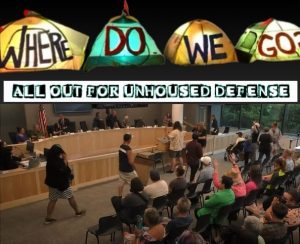School facilities can provide emergency shelter for all
4 min read
by Marty Wilde
We will all need emergency shelter at some point in our lives. The ice storm earlier this month demonstrated this, not just with the unhoused, but also with the thousands of people who lost power to their houses or apartments.
We currently lack a scalable plan that covers both the predictable extremes of cold weather that primarily impacts the unhoused, as well as other extreme events that put all of us in danger. Meeting both challenges is less about adding new resources than it is about weaving together the existing resources in our communities.
Here’s one vision for how our community can come together in an emergency: Use the existing school facilities that are distributed geographically throughout our community and readily accessible to those in need.
The first step is restoring schools to their traditional role as cornerstones of our communities. Beyond the lives lost, a tragedy of school shootings is the conversion of our schools from inclusive places that bring people together to fortresses that are inaccessible to all except students and staff. Our security concerns are real, but they have metastasized beyond their necessary role in protecting students during school hours into the wholesale exclusion of school buildings from any other role in our communities.
When I was growing up near Triangle Lake, the school hosted events as diverse as community exercise programs to community theater, as well as being a transportation hub and location for the distribution of food. When the church was not large enough to hold the memorial service for a community member, the school offered the gym for the purpose. Triangle Lake School was the heart of our community.
Schools provide the cornerstone of any rational emergency shelter plan. As we complete our current wave of construction, schools have become the most earthquake-safe buildings around. They have the large spaces and kitchens necessary to shelter and feed large groups of people. And, because of Oregon’s unusually low number of school days, students are required to be in the building fewer than half the days in a year. Oregon requires, at most, 165 school days, rather than the usual 180. This comes despite Oregon’s per capita state support for schools now exceeding the national average.
What schools lack, other organizations can effectively provide in school buildings. Most school buildings are located close to main power lines, easing the restoration of power to them by power companies. With commercial kitchens in every school, our community partners can store and prepare emergency stocks of food. School nurses’ offices can provide space for basic medical care, diverting people from our overburdened hospital emergency departments during times of crisis.
Even without school staff, our schools can provide a location for volunteers, whether from Egan Warming Centers or the Community Emergency Response Team program, to provide support and security for the community. Lane Transit District can use schools as community hubs to bring people unable to transport themselves, like some seniors and the disabled, to places where they can receive the support they need.
Public schools are not funded for emergency responses, so no rational plan can rely on school funding, even to support critical community needs. But the incremental costs can easily be borne by other community partners. The county or city can provide insurance coverage. A variety of groups can provide emergency food. Emergency supplies like sleeping pallets can be stored in on-site containers, just as they are currently stored at Egan sites.
While we cannot expect schools to fund the emergency response, we can arrange for them to accept their part of the responsibility we all share to help people in need, whether the currently unhoused or those temporarily dislocated by earthquake, floods, extreme weather, or similar event.
This kind of support has existed in the past. During the 2020 fires, I helped at Springfield high schools with distribution of supplies and transportation of fire refugees. Spencer Butte Middle School opened its doors to the community during an ice storm a few years ago, and both 4J and Bethel offered space to Egan during the pandemic, although they have declined to do so since.
These ad hoc efforts demonstrate the viability of restoring schools to the role they should play as community hubs. While this takes planning, it is one of the rare government programs that does not require substantial new resources. It only requires us to insist that our elected officials and public servants work together to meet our community needs.
If you agree, I encourage you to write the County Commission, City Council, 4J School Board, and LTD Board, to let them know you expect them to work together to solve this problem. We don’t just owe emergency shelter to the unhoused. We owe it to everyone who needs it when disaster strikes.
Marty Wilde represented central Lane and Linn counties in the Oregon legislature. For more of his Letters From a Recovering Politician, subscribe at https://martywilde.substack.com/subscribe.
Volunteer or donate to Egan Warming Centers at https://www.svdp.us/services/shelter-assistance/egan-warming-centers/.




